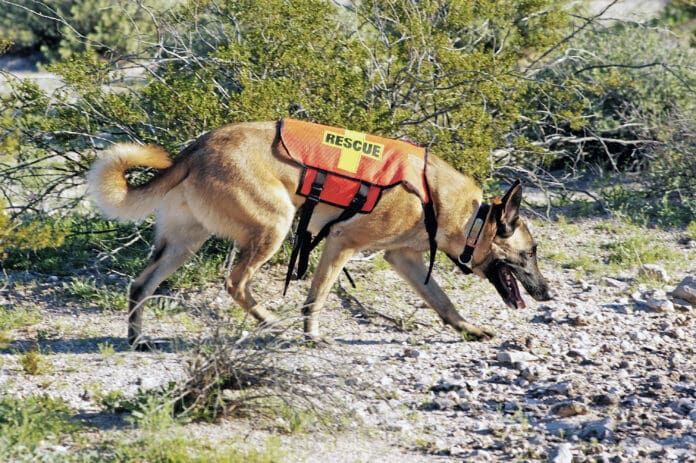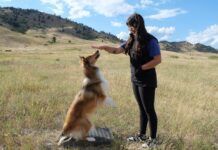The Flehmen response in dogs and many other mammals is a natural reaction to a new or strange smell. Urine is one of the most common causes of the Flehmen response in dogs, but some male dogs may show the Flehmen response when they smell a female dog nearby. The male dog may also show teeth chattering after sensing the female’s presence.
Classic signs of the Flehmen response are:
- Curled-back and raised upper lip, often with wrinkles near the nostrils
- Raised head
- Exposed teeth, possibly with chattering
- Open mouth
However, you may not always notice the Flehmen response in a dog.
Horses are widely believed to have the obvious Flehmen response with a marked raised upper lip, wrinkled nostrils, and a raised head. In dogs, says a study published in 2022 in Animals, it’s not as easy to identify: “The typical Flehmen reflex is not observed in dogs and cats because their upper lips are too rigid and firmly fixed via the frenulum to permit this type of movement. These animal species exhibit different attitudes of behavior, namely they assume a position with an upright head and neck, which they stretch forward for a short time.” In dogs, say the researchers, there often is a rapid retraction of the tongue that likely aids in the perception of pheromones.
This doesn’t mean dogs don’t do the Flehmen response (they do, read on). It just means it isn’t always obvious to an onlooker.
Jacobson’s Organ in Dogs
The open-mouth part of the Flehmen response allows Jacobson’s organ to be maximally involved. Jacobson’s organ, also known as the vomeronasal organ, consists of sensory cells in the front of the nasal cavity, just behind the incisors (the little teeth in front between the long canines, or fangs). Danish physician Ludwig Levin Jacobson identified Jacobson’s organ in 1813.
Jacobson’s organ detects nearly seemingly scentless things like pheromones. If pheromones are detected, the organ sends the information to what some experts call a “secondary olfactory organ” in the brain to trigger the mating instinct. Australian scholar Michael Stoddard published a paper in Nature (2000) that called the organ a “sixth sense.”
Dog’s Amazing Ability to Detect a Scent
It is possible that a dog who is panting more out of interest or excitement rather than fatigue may be using that open-mouth, tongue-out posture to bring more air past Jacobson’s organ to help identify a smell. Experts continue to be amazed at what dogs can find by smell. A dog’s ability to detect a scent is said to be 10,000 to 100,000 times that of a human, according to a 2018 research study published in Frontiers in Veterinary Science.
Recent studies show that dogs can detect not only specific scents of drugs or explosives, but dogs can also note changes in emotions and human cell metabolism during various illnesses, including COVID-19 infection. And, of course, dogs are critical in the search for a missing person.
It’s interesting to note that scent work is a fast-growing sport. Both humans and dogs appear to be enjoying doing nose work (or scent work) competitions. Noting and tracking a scent is like reading a newspaper to dogs—it’s information. That love of smelling things is one of the many reasons experts encourage us to allow our dogs to sniff about when we’re on walks.






